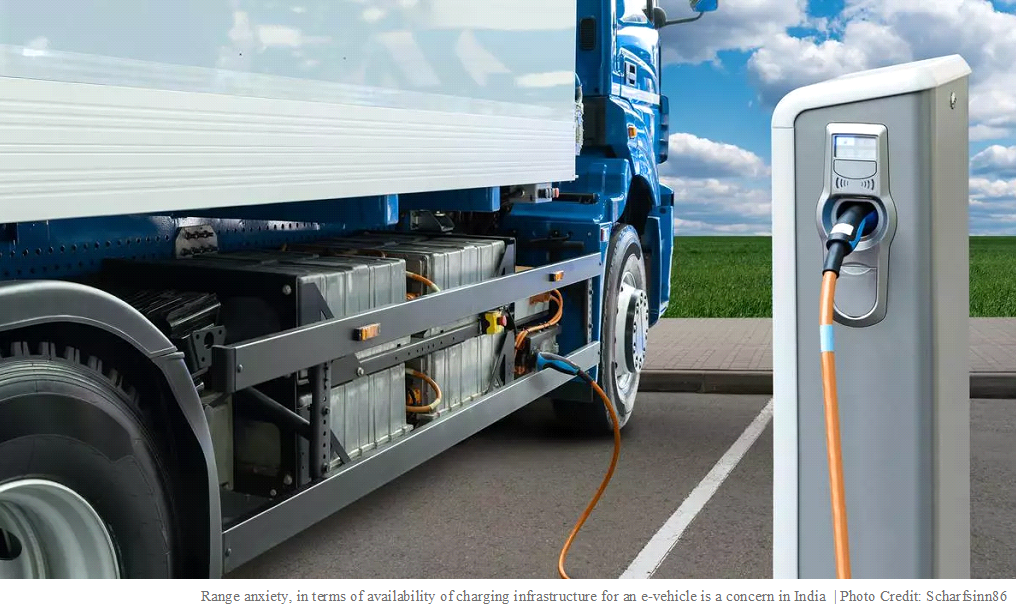Will e-mobility go the biofuel way?
09 Apr 2024
Opinion: Sanjib Pohit and Chetana Chaudhuri.
EVs’ growth may suffer due to problems of battery availability and disposal, just as biofuel has been hit by feedstock constraint.
E-mobility seems to be the buzzword in India now. Almost every other day, some news comes out on how much progress India has made in the use of electric vehicle in the transport sector and how it helps in reducing carbon emission. While the progress in the use of e-vehicle is a fact, the carbon saving due to use of the same is highly exaggerated for the simple fact that India is still heavily dependent on fossil-based electricity for recharging e-vehicles.
Thus, unless we can tilt the balance sharply in favour renewables-based electricity, there will be a net increase in carbon emissions, as per IEA analysis, when considering life-cycle emissions. Moreover, as e-vehicles weigh more than internal-combustion (IC) vehicles, it may lead to higher tyre-related particulate emissions, even though it removes tailpipe emission of IC-vehicles.
Range anxiety, in terms of availability of charging infrastructure for an e-vehicle is a concern in India, especially in rural/ remote areas and highways, and also the charging time is longer than refuelling an IC vehicle. Setting up a charging station is capital intensive, both in terms of land and technology. Widespread adoption of e-vehicle can affect electricity grids, especially at peak hour of demand. Battery swapping, where a depleted battery can be replaced with a pre-charged one, can save time for full charging, but the technology is yet at a nascent stage in India, and significant investment and co-ordination among the stakeholders are required to develop the infrastructure.
Additionally, it also requires standardisation of the battery design, efficient testing and compliance for compatibility adherence. With the growth of e-vehicles, there is a need to increasingly focus on supply-chain related issues, particularly batteries. The manufacture of batteries for e-vehicles is growing at a much slower pace than the adoption of vehicle use, and thus India is following an import dependent pathway. This is a very risky proposition.
As all countries move towards e-mobility and most of them bank on imports for sourcing of battery, the prices of batteries may skyrocket in the coming years, especially as some of the raw materials are sourced from limited geographic regions. Thus, near self- sufficiency in batteries is a must for faster adoption of e-vehicles. This would not only safeguard India from the vagaries of global battery price, just like crude oil prices, but will also pave the way for growth of jobs in the sector. Surely, the job prospects will be higher if the domestic supply chain of e-vehicles is developed as far as possible.
CBAM effect
With growth of e-vehicles, the disposal of batteries will be a matter of environmental concern. India is not paying enough attention to this. It appears India has yet to learn the lesson from the CBAM (Carbon Border Adjustment Mechanism) experience. Looking back, developing countries like India were quite happy when ‘dirty’ industries from the EU moved to their shores following the Kyoto Protocol. Three decades later, the EU comes up with CBAM, which is likely to affect some of our industries. The EU has already announced that the reach of CBAM will be expanded to other sectors. Most likely e-waste, particularly batteries, will be on top of their agenda. The EU’s policy is stringent on the same and to create a level-playing field, it will expect partner countries to be on the same page in this respect.
A decade back, the kind of hype currently being witnessed in the case of e-mobility was observed in the case of biofuel. Down the line, however, we are yet to achieve 20 per cent blending target, even though at one point the government gave tax incentives for flexi-IC vehicles so that it is technically possible to run a vehicle on 100 per cent biofuel, just like in Brazil.
However, biofuel growth did not take off like in Brazil. The weakness in feedstock for biofuel was the real bottleneck, even though India is self- sufficient in other parts of the supply chain for biofuel.
On the jobs front, e-mobility is no match to the biofuel sector. However, not much attention has been paid to increase the feedstock supply of biofuel by way of scientific research to increase the oil-bearing capacity of biofuel feedstock. While India has achieved success in food crops through the Green Revolution, this sector has not receive similar attention. Productivity, and not land, probably is the principal constraint for its growth.
Unless sufficient attention is paid to supply bottlenecks and the battery disposal issue, e-mobility may go the biofuel route. A collective and co-ordinated effort is required from the government, industry and other stakeholders to develop infrastructure, facilitate a supply-chain that includes domestic manufacturing, increase awareness about battery disposal, and incentivise adoption to cater to the increasing demand for fuels triggered by a large and growing population and expansion of urbanisation in the country.
Sanjib Pohit is Professor at NCAER and Chetana Chaudhuri is Fellow at NCAER. Views are personal.
Published in: The Hindu Business Line, 09 Apr 2024






